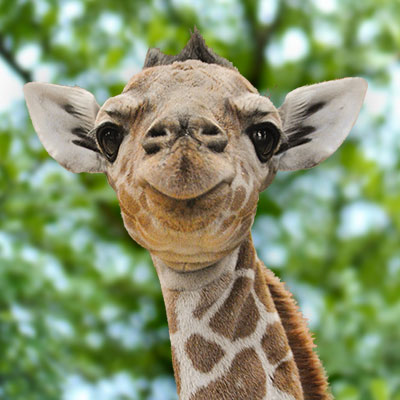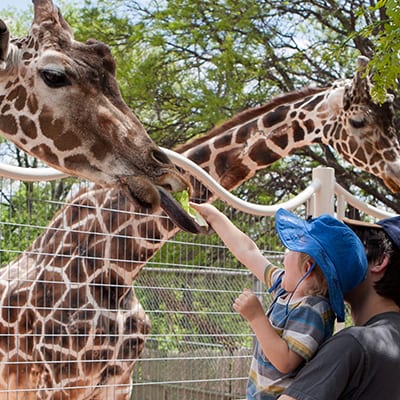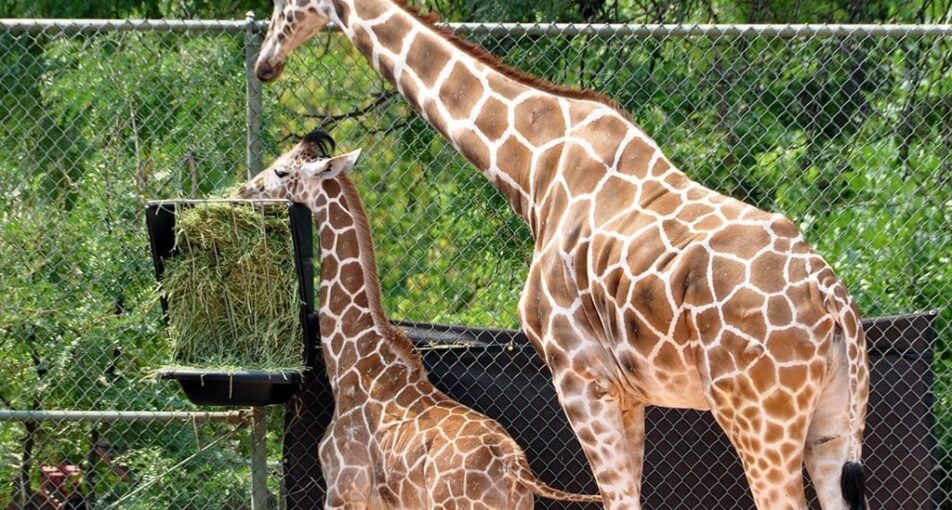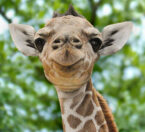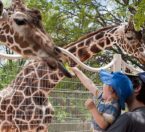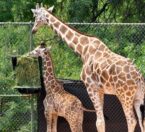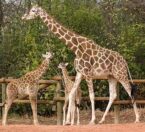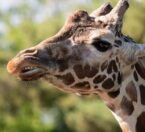Everything about a giraffe is longer or taller than other animals! Because of their height, giraffes do not have to compete for food. The giraffe’s legs are longer than an average man is tall (six feet), and their front legs are longer than their back legs. Even the giraffe’s tongue is long – as much as 18 inches. The tongue is strong and flexible allowing them to grasp and strip leaves from thorny branches.
Classification
| CLASS: | Mammalia |
| ORDER: | Artiodactyla |
| FAMILY: | Giraffidae |
| GENUS: | Giraffa |
| SPECIES: | reticulata |
Habitat & Range
Reticulated giraffes can be found across northern and north-eastern Kenya, and small restricted populations most likely persist in southern Somalia and southern Ethiopia.
They inhabit open woodlands and dry savannas with trees, especially various species of acacia trees.
Location


Adaptations
- A reticulated giraffe’s height enables it to reach food sources that are out of reach for other animals.
- Long prehensile tongues and fleshy lips strip leaves from branches.
- The tongue allows the giraffe to reach leaves on thorny branches without scratching its face or eyes.
- To keep their blood flowing, giraffes need big hearts, two feet (0.6 m) long and weighing about 25 pounds (11kg), and large blood vessels.
- Giraffes are ruminants with four-chambered stomachs that process their fibrous diet.
- Their ability to chew their cuds while walking allows them to make efficient use of foraging time.
- Reticulated giraffes have excellent eyesight, allowing them to see movement up to a mile away, and a keen sense of hearing that help them be safe from predators.
- Their spotted coat pattern helps to camouflage them in the dry savanna.
- They can run 35 miles per hour (56 kph) for short distances and can deliver a strong kickto discourage predators.
Physical Description
- Giraffes are the tallest land mammals.
- Males range from 16-18 feet (4.8-5.5 m) tall and weigh as much as 4,200 pounds (1,900 kg); females reach 14-16 feet (4.3-4.8 m) tall and weigh up to 2,600 pounds (1,180 kg).
- The reticulated giraffe’s coat has a pattern of large polygon-shaped brown spots on a creamy white background, a pattern that is unique to each individual.
- Their legs are about six feet (1.8 m) long, longer than the average man is tall.
- Their six foot (1.8 m) long necks have only seven vertebrae, the same number as humans.
- Their backs are steeply sloped from front to back; their front legs are longer than their back legs.
- Both males and females have short, fur-covered horns called ossicones on the tops of their heads.
- Their black prehensile tongues are about 18 inches (46 cm) long.
- Their feet have two digits.
Diet
What Does It Eat?
In the wild:
Reticulated giraffes eat leaves, flowers, seed pods and fruit. Acacias are their preferred food source.
At the zoo:
Denver zoo’s giraffes eat alfalfa hay, grain, and browse, fruits and vegetables for training and enrichment.
What Eats It?
Lions, leopards, hyenas, and crocodiles hunt mostly young, old or sick giraffes.
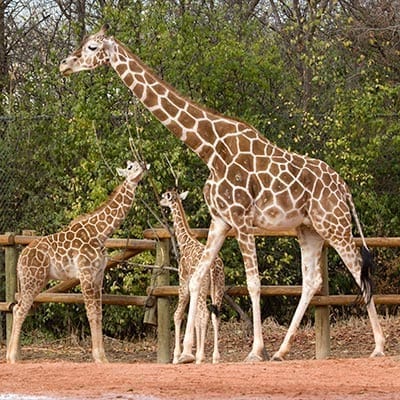
Social Organization
Reticulated giraffes live in loose, open herds of a few animals up to 40 whose composition frequently changes. Herds may consist entirely of females with or without calves, mixed sexes or all males. Females are more social than males. Males are not territorial but individuals may spar with one another to establish dominance.
Life Cycle
Reticulated giraffes breed year round. Males sniff a female’s urine to determine whether she is receptive to breeding and guard a receptive female from other males. Gestation lasts about fifteen months followed usually by the birth of one calf although twin births are possible. Females give birth walking or standing up, and calves are able to stand and begin nursing within an hour. Newborns are about six feet (1.8 m) tall and weigh up to 160 pounds (72.6 kg). When the calf is a month old, it and its mother join a nursery made up of other mothers and their calves. Mothers take turns guarding the nursery while others forage nearby, returning to the nursery frequently to nurse their calves. Calves are weaned at twelve to thirteen months and remain with their mothers for a few additional months. Females reach sexual maturity at three to four years old; males about a year later. Giraffes have an average lifespan of about 25 years in their natural habitat and a range of 20 to 27 years in human care.
